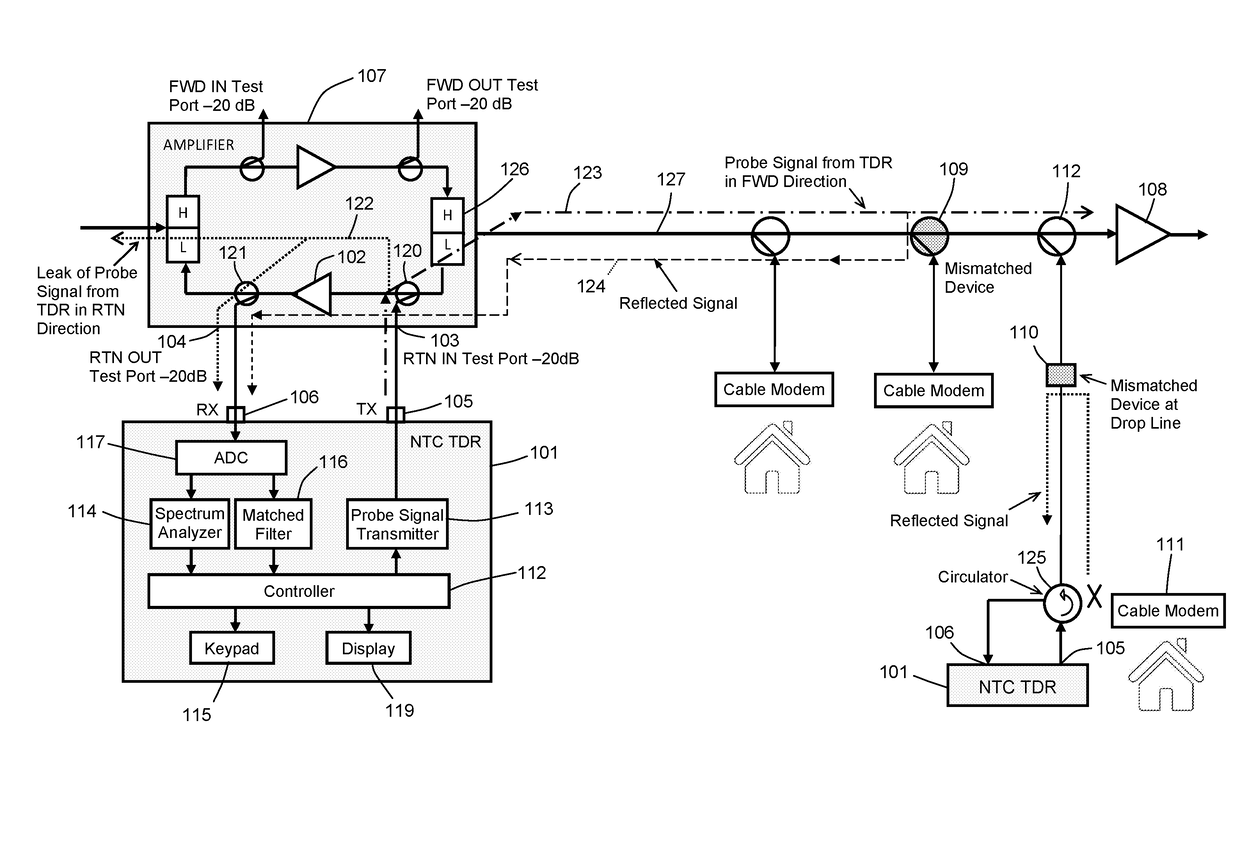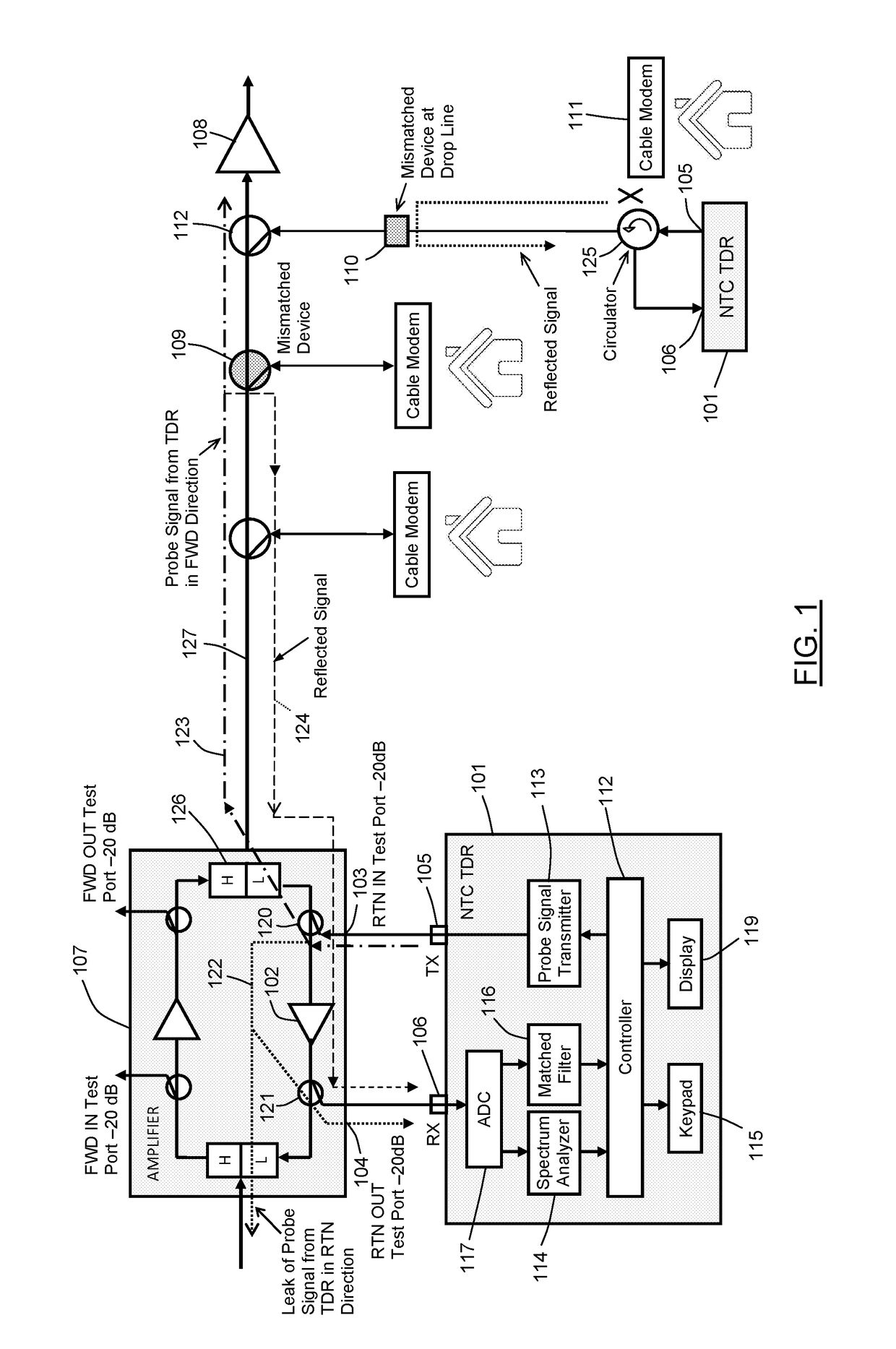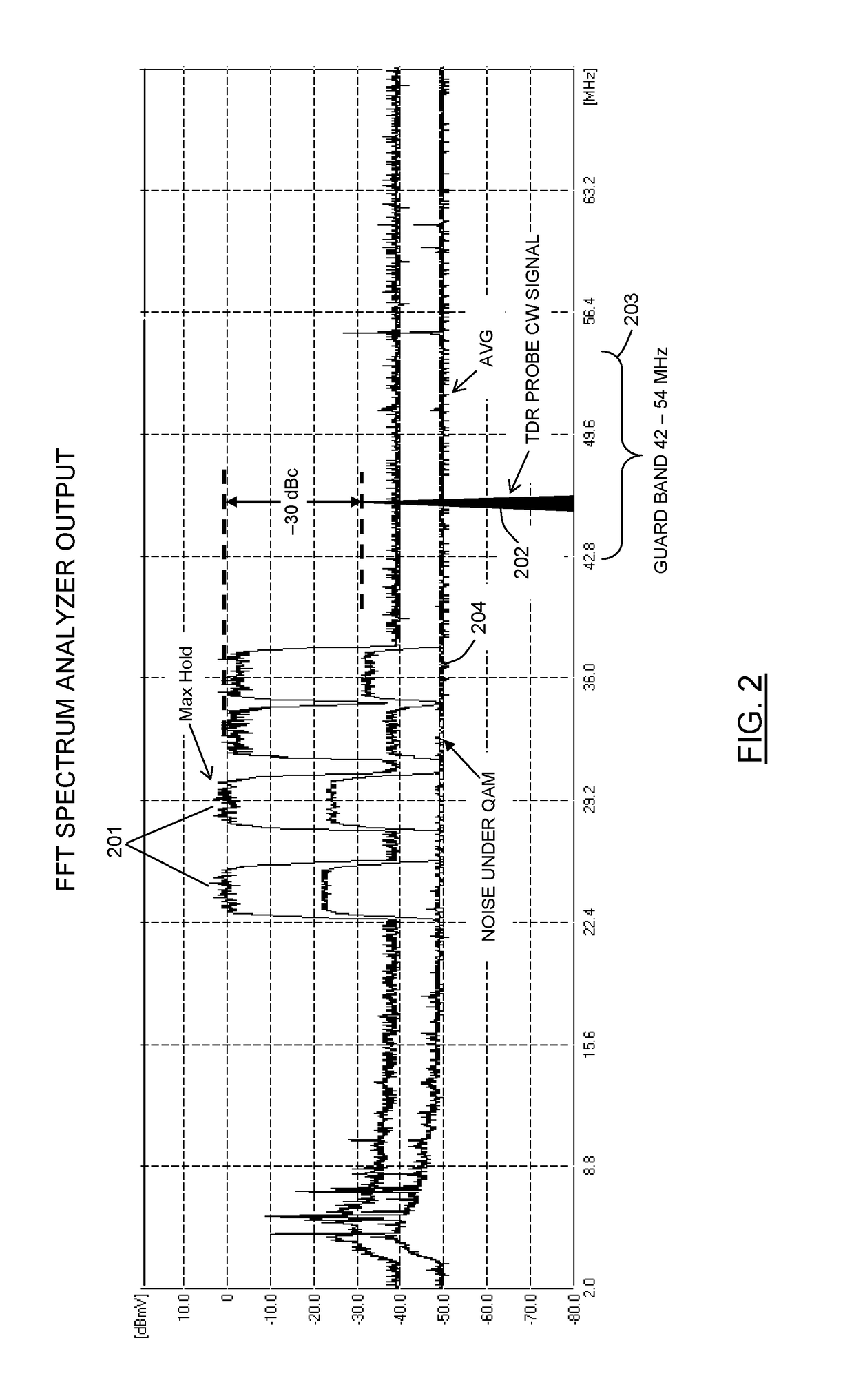Network Traffic-Compatible Time Domain Reflectometer
a network traffic and reflectometer technology, applied in the direction of digital transmission, time-division optical multiplex system, transmission path sub-channel allocation, etc., can solve the problem of difficult tdr employment inability to test tdr in live hfc network, and inability to detect mismatches. to achieve the effect of wide bandwidth and maximize time resolution and accuracy
- Summary
- Abstract
- Description
- Claims
- Application Information
AI Technical Summary
Benefits of technology
Problems solved by technology
Method used
Image
Examples
Embodiment Construction
[0042]Time domain reflectometry (TDR) apparatus and methods according to the preferred embodiment of the present invention is based on the following features:[0043]1. Using low-level spread spectrum probe signals within full upstream bandwidth of an HFC network, to prevent interference with service signals and provide maximum time resolution;[0044]2. Injection of a continuous wave (CW) calibration or test signal into the guard band, between upstream and downstream bands, before testing network with probe signal, for accurate setting of probe signal level (operational level) to prevent interference with upstream service signals;[0045]3. Using coherent sequence of short chirp pulses, as the preferred spread spectrum probe signal, for providing immunity from high-level QAM burst signals in upstream band and further reducing interference with the QAM and other service signals; and[0046]4. Receiving reflected probe signal in time intervals when there are no high-level QAM burst signals, ...
PUM
 Login to View More
Login to View More Abstract
Description
Claims
Application Information
 Login to View More
Login to View More - R&D
- Intellectual Property
- Life Sciences
- Materials
- Tech Scout
- Unparalleled Data Quality
- Higher Quality Content
- 60% Fewer Hallucinations
Browse by: Latest US Patents, China's latest patents, Technical Efficacy Thesaurus, Application Domain, Technology Topic, Popular Technical Reports.
© 2025 PatSnap. All rights reserved.Legal|Privacy policy|Modern Slavery Act Transparency Statement|Sitemap|About US| Contact US: help@patsnap.com



